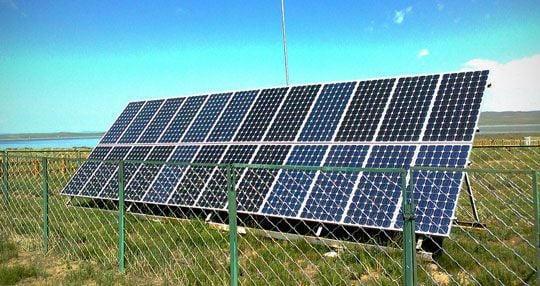Better market access for environmental goods
Historical archive
Published under: Solberg's Government
Publisher: Ministry of Foreign Affairs
Article | Last updated: 15/05/2015
Norway is participating in negotiations on a new international agreement to liberalise trade in environmental goods. The aim of the agreement is to promote trade in goods that contribute to green growth and sustainable development.
Environmental goods and technologies can be an important contribution to efforts to deal with climate change and environmental problems. Renewable energy investment has, for example, increased more rapidly than investment in other energy markets and is forecast to rise steeply. Increasing market access for new environmental technology – and promoting its use – has been a priority in Norway’s trade and environmental policy for many years.
The World Trade Organization (WTO) has been conducting negotiations on reducing tariffs and increasing market access for environmental goods since 2001, but has not yet achieved concrete results that are supported by all its members. As a result of this lack of progress, a group of WTO members launched a new initiative in January 2014 to prepare for negotiations on an environmental goods agreement.

All WTO members stand to benefit greatly from such an agreement through the application of the most-favoured nation principle. The long-term aim is to secure a multilateral agreement involving the participation of all WTO members.
Negotiations on an Environmental Goods Agreement were formally launched in Geneva on 8 July 2014 by the WTO ambassadors of the 14 participating WTO members. The first round of negotiations was held on 9–10 July.
The list of environmental goods adopted by Apec (Asia Pacific Economic Cooperation) in 2012 is the starting point for the negotiations.
Participating WTO members
Australia, Canada, China, Costa Rica, the EU, Hong Kong, Japan, New Zealand, Norway, Singapore, South Korea, Switzerland, Taiwan and the US are participating in the environmental goods negotiations. In total, 41 countries are taking part, if each of the EU member states is counted separately.
The US has long worked to increase market access for environmental goods and is a market leader in environmental technologies. The US is aware of its interests as both a major importer and exporter. The work towards an Environmental Goods Agreement is part of President Obama’s Climate Action Plan, which was launched in 2013.
China accounts for 18 % of trade in goods that are included on the Apec list of environmental goods. China has a key role to play in this area due to its growing environmental technology industry and its position as a major exporter and importer of different types of environmental goods.
The EU views the negotiations launched in July 2014 as a step towards a broader agreement that also encompasses non-tariff barriers and environmental services. Environmental goods and technologies are a key element in the EU’s Green Employment Initiative, in line with its general aim to increase the use of climate- and environmentally-friendly goods and services.
The EU, Switzerland, Norway and Costa Rica are not members of Apec. In the negotiations, it will be necessary to establish a common understanding of the products on the Apec list.